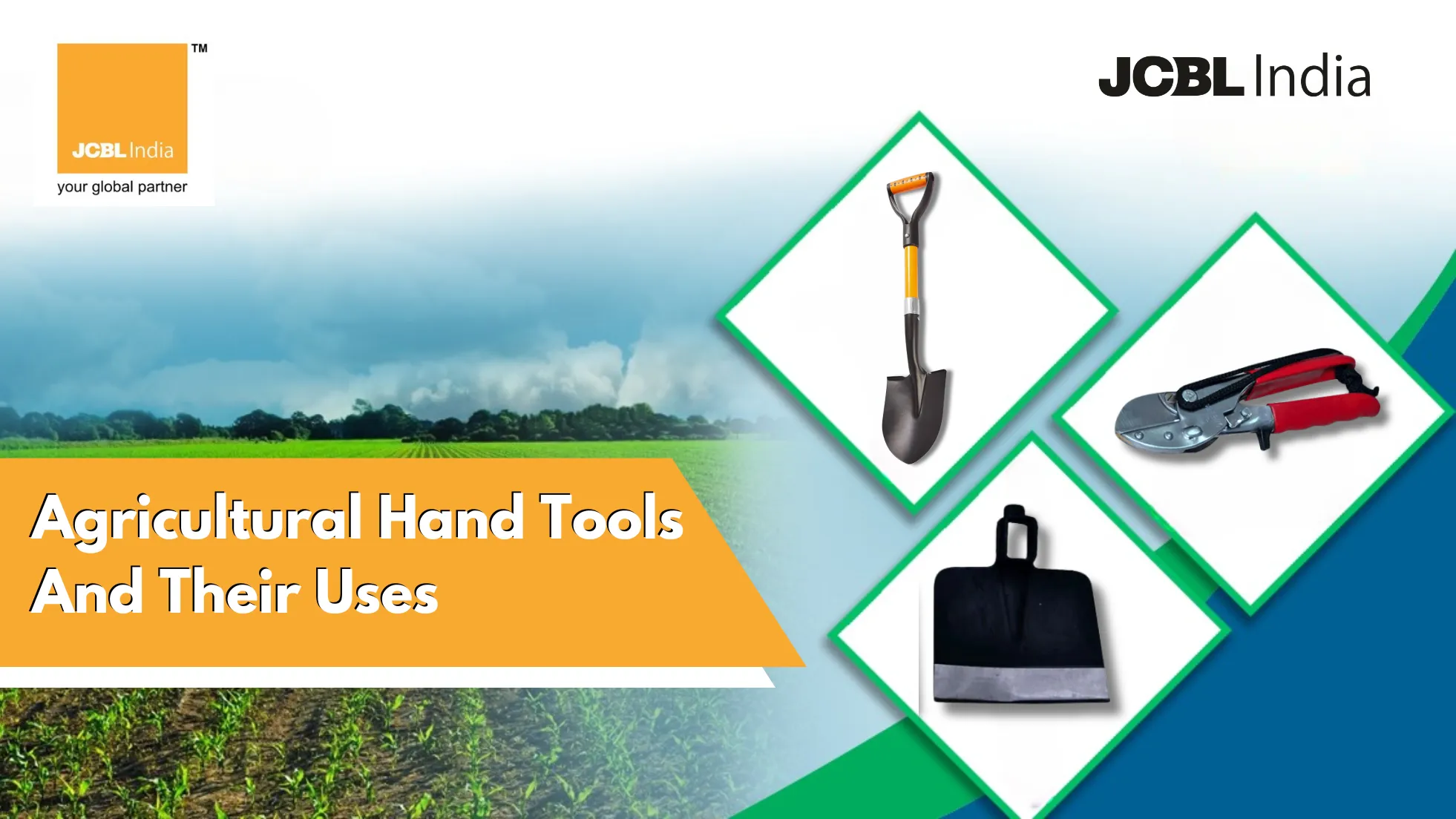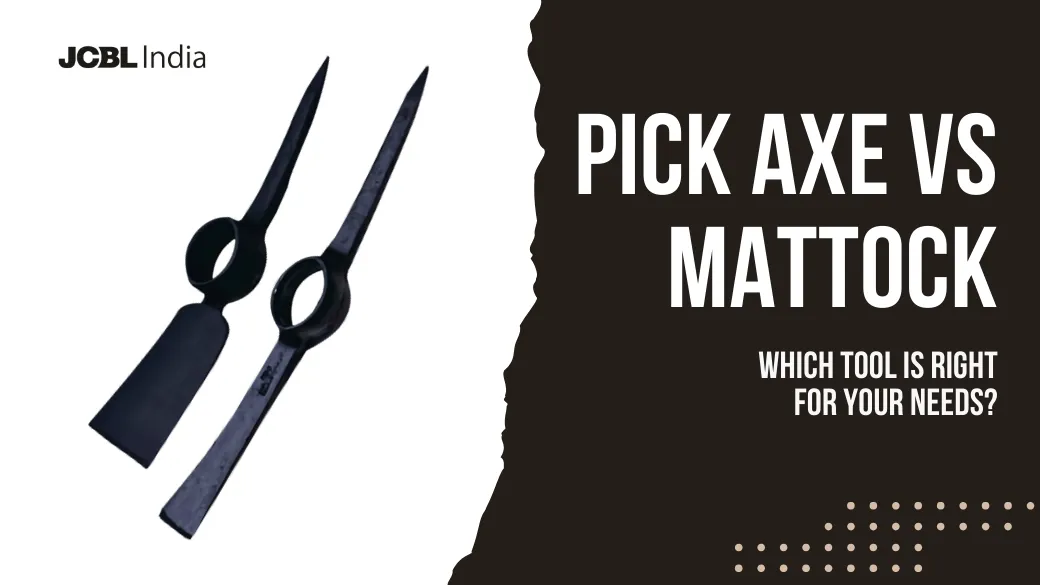How Agricultural Hand Tools Improve Productivity in Small Farms

Small farms often suffer from productivity issues, specifically due to a lack of infrastructure and limited resources. Thus they rely on efficiency and precision to thrive in their business. Whether you’re a professional small-scale farmer or a hobbyist gardener, having high-quality hand tools can help you complete agricultural tasks more efficiently. To help you understand the concept, this blog discusses the importance of high-quality agricultural hand tools in improving productivity in small farms.
Understanding the Value of Agricultural Hand Tools
Agricultural hand tools have been a cornerstone of farming practices for centuries. They allow farmers to engage in various tasks like planting, cultivating, harvesting, and maintaining crops, all with precision. Unlike large machinery, these tools are typically more affordable, require less maintenance, and can be used in areas that machines might struggle to reach. Whether it’s tilling the soil, pruning plants, or harvesting produce, the value of hand tools lies in their simplicity and reliability. With a well-chosen set of tools, a small farm can operate more smoothly, with less dependency on larger equipment.
Basic Agricultural Hand Tools That Are Must-Haves for Small Farms
Efficient farming requires the right tools, especially for small-scale operations where manual labor is essential. The following agricultural hand tools are indispensable for maintaining and cultivating a productive small farm. From preparing the soil to managing plants, these tools play a vital role in ensuring smooth farming operations.
Garden Rake
A garden rake is a versatile tool that serves multiple purposes on a small farm. Its sturdy metal tines are ideal for leveling soil, breaking up clumps, and removing debris like rocks and roots from planting beds. Whether preparing a new garden or maintaining an existing one, the garden rake ensures a smooth and even surface for planting. Its ease of use and effectiveness make it a must-have for any small-scale farmer.
Hedge Shear
Hedge shears are essential for maintaining the aesthetic and health of shrubs, hedges, and small trees. These tools feature long, sharp blades designed for trimming and shaping, helping farmers keep their greenery well-manicured. Hedge shears also help promote healthy plant growth by removing dead or overgrown branches. Their ergonomic design allows for precision cutting, making them invaluable for both decorative and practical farming tasks.
Hoe
The hoe is one of the oldest and most reliable farming tools. It is indispensable for weeding, cultivating soil, and creating furrows for planting seeds. Available in various designs to suit specific needs, the hoe is lightweight and easy to handle. Its simplicity and efficiency make it a staple on small farms, aiding in maintaining clean and fertile planting areas.
Pick Mattock
A pick mattock is a powerful hand tool used for breaking hard soil, digging trenches, and uprooting stubborn roots. With a pick on one side and a mattock blade on the other, it is highly versatile and effective for heavy-duty tasks. Small farm owners rely on this tool for land preparation, particularly in tough or rocky terrain. Its robust design makes it ideal for labor-intensive jobs that require durability and strength.
Leaf Rake
The leaf rake is a lightweight tool designed for collecting fallen leaves, grass clippings, and other garden debris. It is especially useful during seasonal cleanups, keeping the farm tidy and preventing the buildup of organic waste that could harbor pests or diseases. Its flexible, fan-shaped tines make it gentle on delicate surfaces like grass while effectively sweeping away unwanted materials.
Pruning Secateur
Pruning secateurs, also known as pruning shears or clippers, are indispensable for maintaining the health and productivity of plants. They are perfect for cutting back dead or overgrown branches, harvesting fruits, and shaping plants. Their sharp blades provide precise cuts, minimizing damage to plants and encouraging faster healing. Compact and easy to use, pruning secateurs are a must-have for any small-scale farmer looking to enhance plant care.
Equipping a small farm with these essential tools ensures that daily tasks are carried out efficiently and effectively. By investing in high-quality versions of these hand tools, farmers can optimize their operations, improve crop yield, and maintain a healthy farming environment.
If you want to know more about hand tools, read “Agricultural Hand Tools And Their Uses”.
Key Benefits of Agricultural Hand Tools for Small Farms
Agricultural hand tools can help small farms in many ways; some of them are:
- Cost-Effective: Hand tools are generally much cheaper than machinery. Small farms with limited budgets can get a range of tools that serve multiple purposes without a hefty price tag.
- Precision and Control: Hand tools offer better control when working with delicate crops or in tight spaces. A farmer can work closely with their plants without causing unnecessary damage.
- Low Maintenance: Unlike expensive machines that require regular servicing, hand tools are easy to maintain and can last for years with proper care.
- Versatility: Most hand tools, like hoes, shovels, and rakes, can serve multiple functions. A small farm can perform various tasks like weeding, digging, and soil aeration using just a few tools.
- Sustainability: Hand tools are more environmentally friendly. They don’t require fuel or electricity, which reduces the carbon footprint of farming operations.
- Health and Safety: Many hand tools are ergonomically designed, reducing strain on the farmer’s body, which is particularly important for small-scale farmers who often work long hours.
Tips For Choosing The Right Agricultural Hand Tools
When selecting agricultural hand tools for a small farm, it’s important to consider the specific needs of the farm and the types of tasks being performed. Here are some tips to guide the selection process:
- Assess the Farm’s Needs: Consider the types of crops, the layout of the farm, and the size of the area to be worked. Different tasks require different tools—whether it’s tilling, pruning, or harvesting.
- Prioritize Durability: Choose tools made from high-quality materials like stainless steel or forged steel, which are resistant to wear and tear and can withstand tough farming conditions.
- Consider Ergonomics: Since small farmers often spend long hours using these tools, it’s essential to select those that are comfortable to hold and use. Look for features like padded handles or lightweight designs to reduce hand fatigue.
- Multi-Functionality: Opt for tools that can serve more than one purpose. For example, a hoe with a detachable head might serve as both a digging tool and a weeding tool.
- Tool Maintenance: Choose tools that are easy to clean and maintain. Tools with removable parts or smooth surfaces tend to require less upkeep.
How to Maintain Agricultural Hand Tools for Longevity
Agricultural hand tools are important for improving productivity and efficiency in small farms. They are long-term investments; thus, carefully maintaining them is really important for their longevity. Here are a few maintenance tips for the longevity of hand tools:
- Clean After Use: Dirt, mud, and plant matter can cause rust and deterioration. After every use, clean the tools with water and a stiff brush. For stubborn dirt, use a cloth soaked in soapy water.
- Sharpen Blades Regularly: Many hand tools, like hoes and shears, feature sharp blades. Regularly sharpen these blades to ensure they remain effective for cutting, digging, or pruning. A sharpening stone or file works well for this task.
- Oil the Metal Parts: Apply a light coat of oil (vegetable oil or motor oil) to the metal parts to prevent rusting. This is especially important in regions with high humidity.
- Store Properly: After use, store your tools in a dry place. A tool shed or garage will protect your tools from the elements. Hang them on a wall or place them on a shelf to prevent the handles from warping.
- Check for Wear and Tear: Regularly inspect your tools for any signs of damage. Replace or repair any parts that show signs of excessive wear to keep the tool in working condition.
Conclusion
Agricultural hand tools are essential to small farm productivity. They offer numerous advantages, such as cost-effectiveness, precision, and versatility, making them invaluable to farmers working with limited space and resources. By choosing the right tools and maintaining them properly, farmers can improve their efficiency and enjoy long-lasting, productive results. In an era where sustainability and cost-effectiveness are key, agricultural hand tools continue to play a significant role in supporting small-scale farming operations.
Are you seeking high-quality agricultural tools for your garden or farm? Don’t worry; your search is over. JCBL Hand Tools presents high-quality hand tools for different sectors, including construction, automotive, agriculture, etc.
Visit our website today to check out the full product range and become a partner with JCBL Hand Tools. For any queries, contact us at +91-9815579321 or email us at handtools@jcbl.com.
FAQ’s
What is the most essential hand tool for a small farm?
The most essential tool depends on the farm’s needs, but a high-quality hoe or rake is a great starting point. These tools are versatile and useful for a variety of tasks.
How often should I sharpen my agricultural hand tools?
Sharpening frequency depends on usage. Generally, tools should be sharpened after every few uses or whenever you notice them becoming less effective at their tasks.



